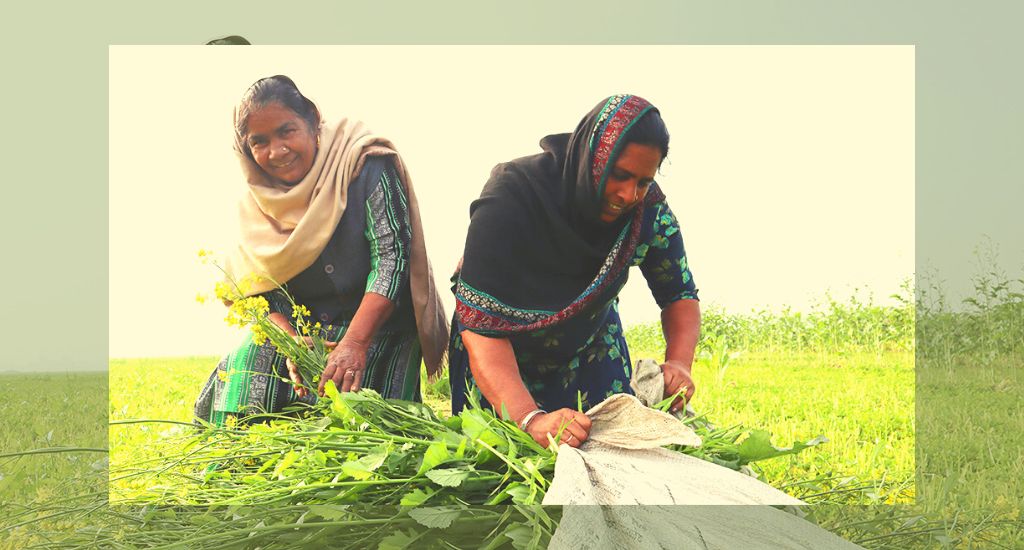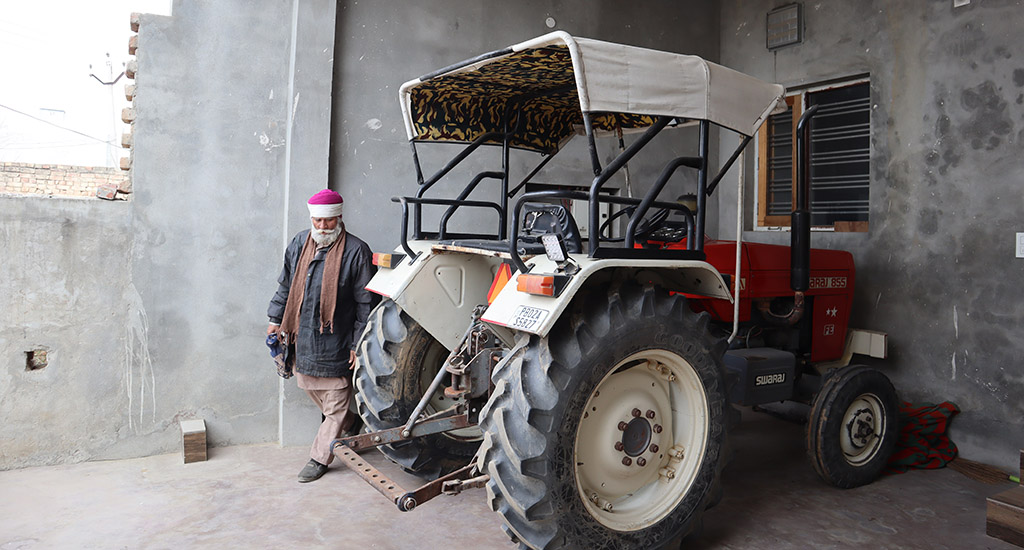
How joint farming in Punjab is allowing Dalits to rewrite their destiny
Besides profits, Dalits in 28 villages of Malwa region in Punjab reap pride in jointly cultivating land that rich farmers mostly cultivated in their name earlier.

Besides profits, Dalits in 28 villages of Malwa region in Punjab reap pride in jointly cultivating land that rich farmers mostly cultivated in their name earlier.
Dalit families of Batriana village in Sangrur district of Punjab have taken charge of their own destinies.
Unlike in the past when they helplessly watched rich landowners cultivate the ‘common land’ reserved for Scheduled Castes, using them as mere proxies, Dalits are cultivating what legally belongs to them, and also making handsome profits.
Under the Punjab’s Village Common Lands (Regulation) Act, 1961, one-third of the cultivable land in any village is reserved for the Scheduled Castes. The SC community can lease the land for up to three years through auctions held every year in April-May by the local administration.
In 28 villages of southern Punjab – known to be the Malwa region – Dalits have been jointly farming the common land for three years.
Batriana village, with 39 acres of common land for reserved category, is one such village in Bhawanigarh block of Sangrur district in the region.
“When we decided to jointly farm the common land in 2017, we took a loan of Rs 10 lakh from an arthiya (commission agent) to lease the common land through bidding and start farming,” said Batriana villager Ram Karan Singh, a Dalit Ramdasia Sikh and a member of Zameen Prapti Sangharsh Committee (ZPSC) – an organisation working for the land rights of Dalits in Punjab since 2014. The interest on the loan was Rs 20,000 a month.

The first crop they sowed was paddy. “We sold the first harvest to the same arthiya and got Rs 8 lakh deducted from the loaned amount. We used the balance Rs 2 lakh we had, to prepare the land for the next crop,” explained villager Sukwinder Singh, also a Ramdasia Sikh, and Bhawanigarh block president of ZPSC.
The community was also growing fodder on the common land. It was being sold to those Dalit families that rear cattle.
The earnings made from it, over Rs 2 lakhs, were again used to repay the loan and for further cultivation.
“We never sold the wheat to the arthiya. We were giving it among the 140 Dalit families of our village at half the market value. A quintal for nearly Rs 1,000,” said Sukhwinder Singh. The minimum support price of a quintal (100 kg) of wheat in the last six years was in the range of Rs 1,625 to Rs 2,015, as per the Food Corporation of India.
“This cycle of taking loans from the agent and repaying from the harvest continued for four years. It wasn’t until 2021 that our situation began to change for the better,” added Ram Karan Singh.

Since then, the community also distributes wheat among themselves without any charge. Each Dalit family gets at least two quintals of wheat every year.
In 2022, they used the profits to buy a tractor and two machines for preparing the land and sowing crops for the ease of farming. Everything was rented out before.
The same year, instead of borrowing money from the commission agent, they kept their earnings of Rs 6,00,000 from farming with the agent, and now earn an interest of Rs 5,400 per month on it.
The Dalits of Batriana village will be using these savings to lease the land this year in May.
The annual average lease rent for the common land is Rs 20,000 per acre for reserved category. For the general category, the average rent is Rs 28,000 per acre. While it is Rs 60,000 per acre for a private farmer in Malwa region.
However, this has not been an easy toil.

“Six years ago, 3-4 people from the community used to lease the common land for farming. Among us one would get 8 acres of land another may get 10 acres of land, depending on the bid,” said Sukhwinder Singh. “One person from the community would then give his leased land to the general category,” he added. For what?
“Nothing major in return. Sometimes for alcohol or for some quintals of wheat,” Sukhwinder said.
Sukhwinder is referring to the proxy candidate. “The upper caste farmers fielded proxy candidates from the reserved category. Many times they were people who used to work as farm laborers on their fields, depriving the Scheduled Caste of their own land rights,” said Mukesh Malaudh, president of Zameen Prapti Sangharsh Committee.
The committee advocates collective bidding and farming on the reserved common land by all Dalits in a village.
The assertion of land rights has often led to grave violence in Punjab. One such incident was in October 2016, when clashes broke out between Dalits and big farmers in Jhaloor village of Sangrur district over the leasing of common land, and caused the death of a Dalit woman Gurdev Kaur (in her 70s). Every year on January 8, the committee mourns her death.

Awareness was being built among all the Dalits of the village, said Sukhwinder, “Like beading pearls to form a necklace. Now no Dalit in the village participates as a proxy candidate for the upper caste.”
Block development and panchayat officer of Bhawanigarh, Manjeet Singh, in whose jurisdiction Batriana village is, said: “Earlier there were disputes among the Dalit villagers. They used to create ruckus about one getting more share of the reserved land and another getting less. Since they have started jointly farming on the land their unity has also grown strong.”
“All SC people come to the auction, but among them they put five Dalit members in front on whose name the plots (in acres) in the common land will be given. These villagers then collectively farm on these auctioned plots,” Manjeet Singh said.
In Bhawanigarh block, Dalits in five villages are jointly farming the common land.
Dalit women of Batriana, like Harpal Kaur (60), now also feel safe when harvesting fodder on the leased land. Six years ago, she didn’t.
“The upper-caste landowners, Jat Sikhs, used to hurl abuse at us for collecting fodder from the farm boundaries. We didn’t know when they would slap us for it. Now we are standing for our rights. We (women) now come to our fields whenever we want and leave whenever we want to,” she said, emphasizing on her rights.

“All working in these fields here are from our community. I am their aunt,” said Nisatar Kaur (60), while cutting the fodder with a sickle for her buffalo.
Harpal Kaur pointed out that earlier while collecting fodder from the farm boundaries of the upper caste farmers, they were made to clean cow dung or do other household chores.
Karan Singh, 51, said it used to be back-breaking exploitation.
“I had to do as per their say. I used to reach the farm by 4 am, bathe their cattle, feed fodder to the cattle, then work on the farm. It used to get as late as 8 pm when I would return home. Now I can even go at 10 am to work. Whether I return early or at night, it doesn’t matter, it is our farm,” Karan added.
The lead image shows Nisatar Kaur and Harpal Kaur harvest fodder in the land leased by the Dalits of Batriana village for joint farming (Photo by Sanskriti Talwar)
Sanskriti Talwar is an independent journalist who writes about gender, human rights and sustainability. She is Rural Media Fellow 2022 at Youth Hub, Village Square.